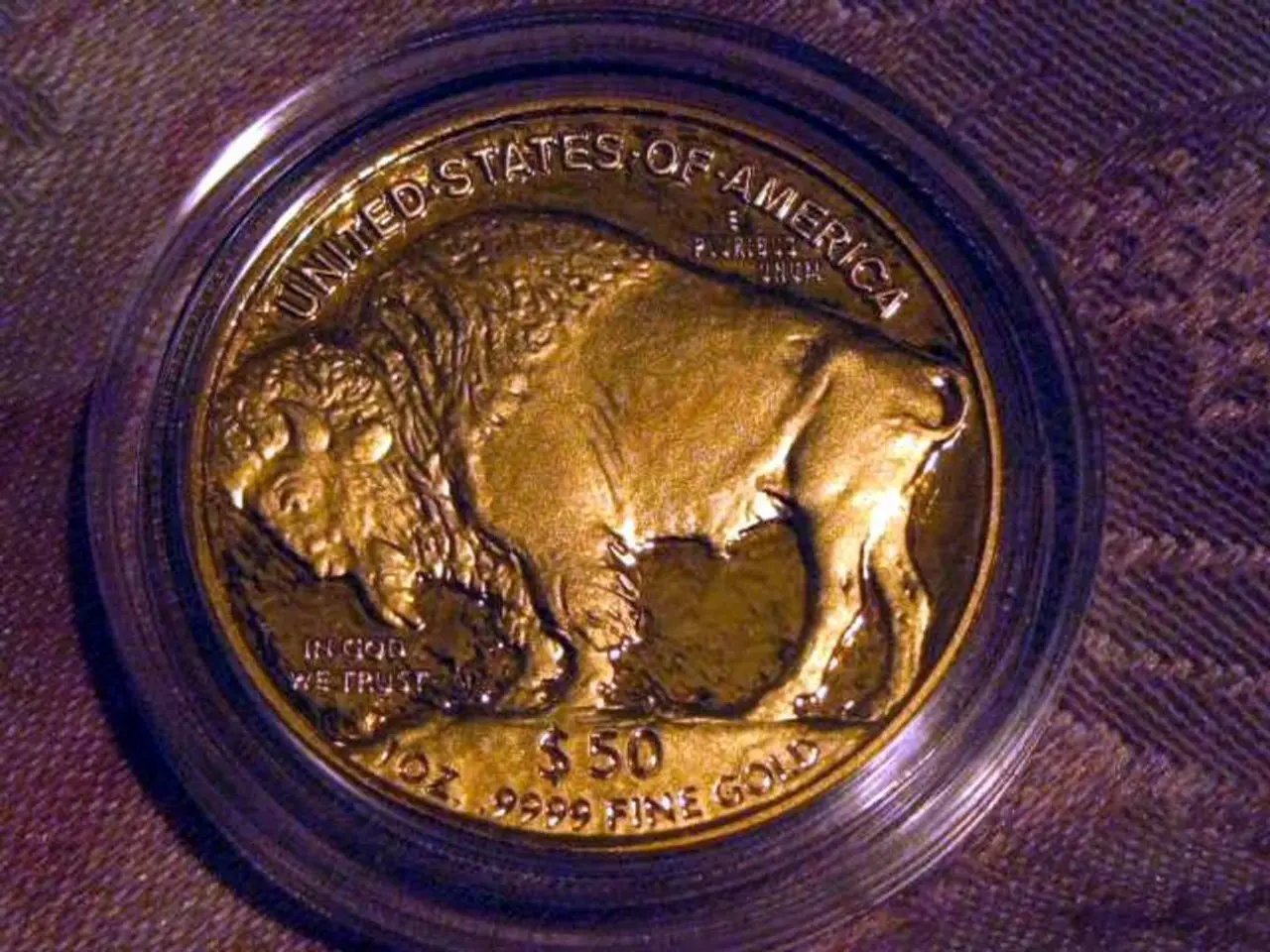Fed Chair Powell intimates continuation of current monetary policy in September
In a recent visit to the renovated Federal Reserve headquarters, President Donald Trump was greeted by Chair Jerome Powell, who described the occasion as a "nice visit". However, Powell did not make a decision regarding the September meeting in the Fed's latest decision.
Powell has expressed concerns about the impact of tariffs on the economy, stating that their effects on economic activity and inflation are yet to be fully seen. According to Powell, higher tariffs have started to show through more clearly to the prices of some goods, but the overall impact remains uncertain.
The Fed's economic activity growth moderated in the first half of the year, with swings in net exports affecting the data. The consumer inflation in the U.S. rose 2.7 percent year-on-year in June, a figure that Powell is closely monitoring.
Powell reaffirmed the central bank's commitment to a "moderately restrictive" policy stance and stated that the current stance leaves the Fed well positioned to respond to potential economic developments. However, he also emphasised that the Fed wants to assess whether President Trump's tariffs could cause an uptick in inflation before considering a rate cut.
The estimates of the effective level of tariffs are not moving around much, according to Powell. He also described the trade negotiations as "very dynamic".
Looking back at 2019, Powell's stance has evolved significantly. Initially, he continued raising interest rates to respond to a strong U.S. economy. However, amid market volatility and pressure from President Trump, he shifted to cutting rates three times, bringing the federal funds rate down from 2.5% to 1.75% by October 2019. These measures aimed to support the economy against tariff-related headwinds and financial market disruptions.
Powell described tariffs as a drag on economic activity, influencing inflation pressures and justifying the Fed's more accommodative posture. Despite President Trump's vocal criticism, Powell maintained the Fed's independence and focused on balancing inflation control with economic support in light of trade uncertainties.
In the Fed's latest decision, the policy rate remained unchanged, with the federal funds rate remaining at the 4.25 percent-4.50 percent range. As the trade situation continues to evolve, Powell will need to navigate these uncertainties carefully to ensure the Fed's monetary policy remains effective in supporting the U.S. economy.
[1] Federal Reserve Press Releases and Statements [2] Federal Reserve Meeting Minutes [3] President Trump's Tweets and Statements [4] Jerome Powell's Speeches and Testimonies
- The concerns about the impact of tariffs on the economy, as expressed by Jerome Powell, are closely related to the finance sector and business activities, as higher tariffs might affect the prices of goods and potentially influence the Fed's monetary policy decisions.
- Jerome Powell has reaffirmed the Federal Reserve's commitment to a "moderately restrictive" policy stance, noting that the current stance leaves the Fed well positioned to respond to potential economic developments in the business world, such as tariff-related headwinds and financial market disruptions.




